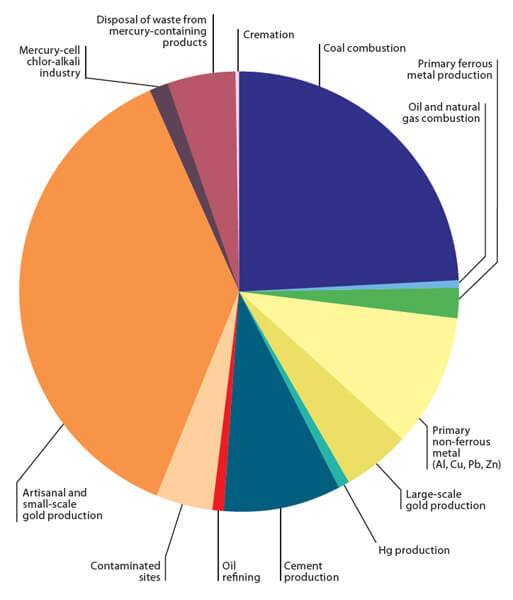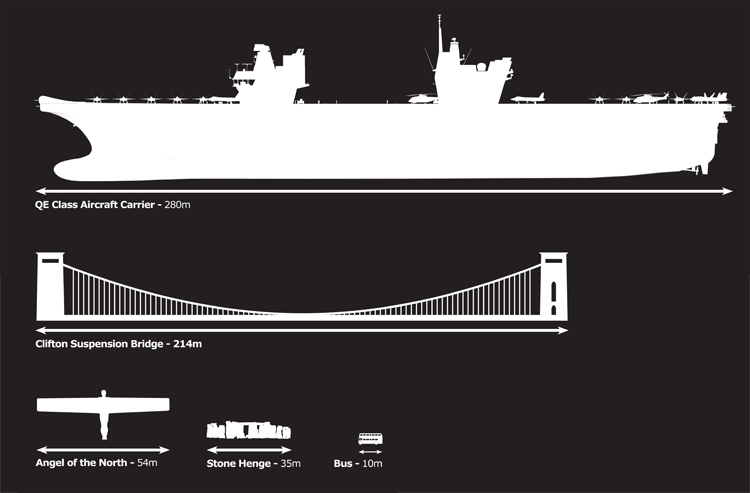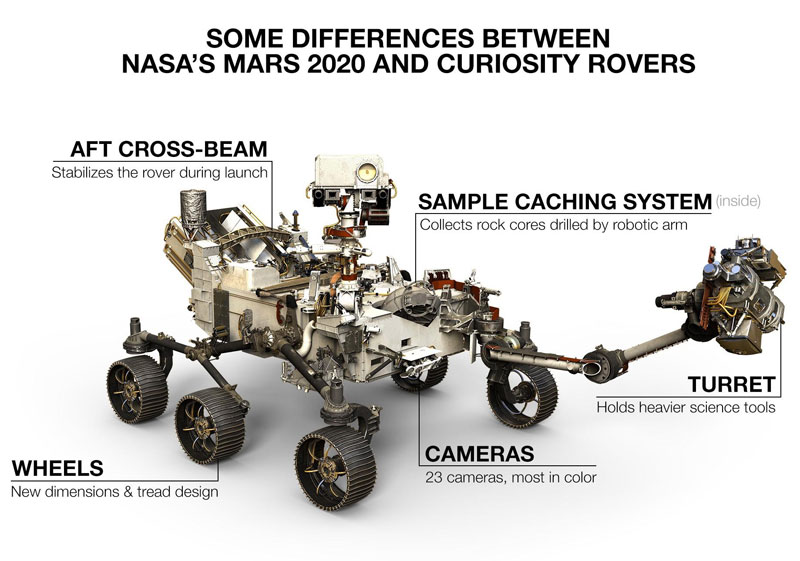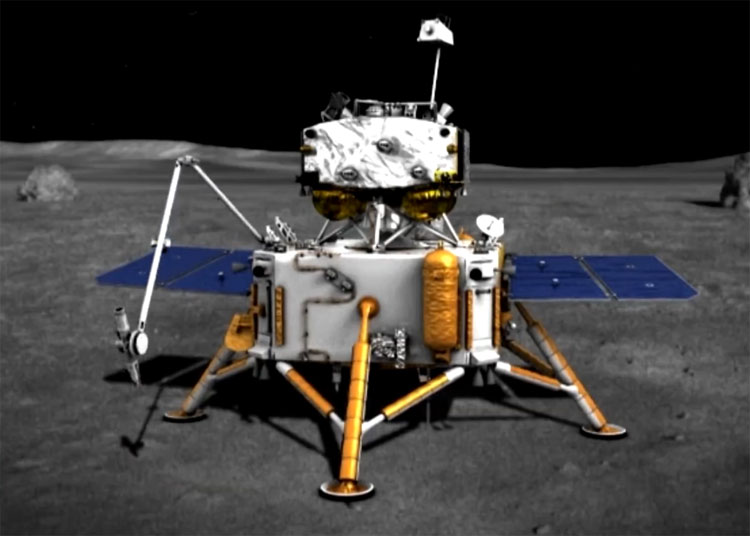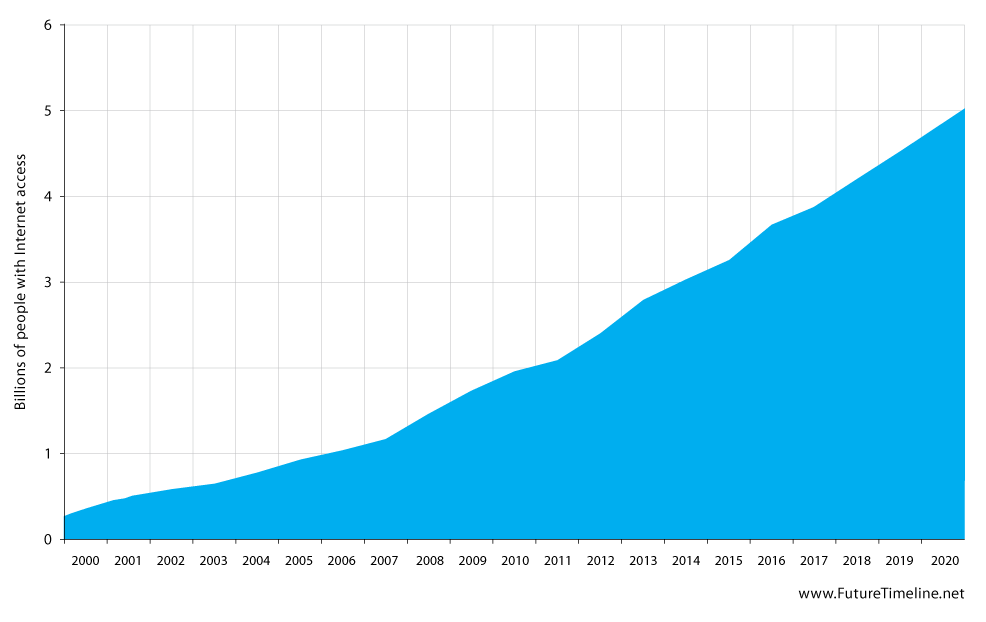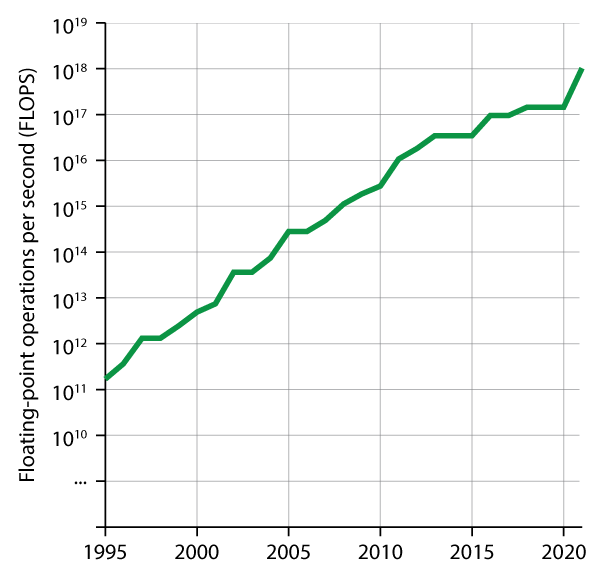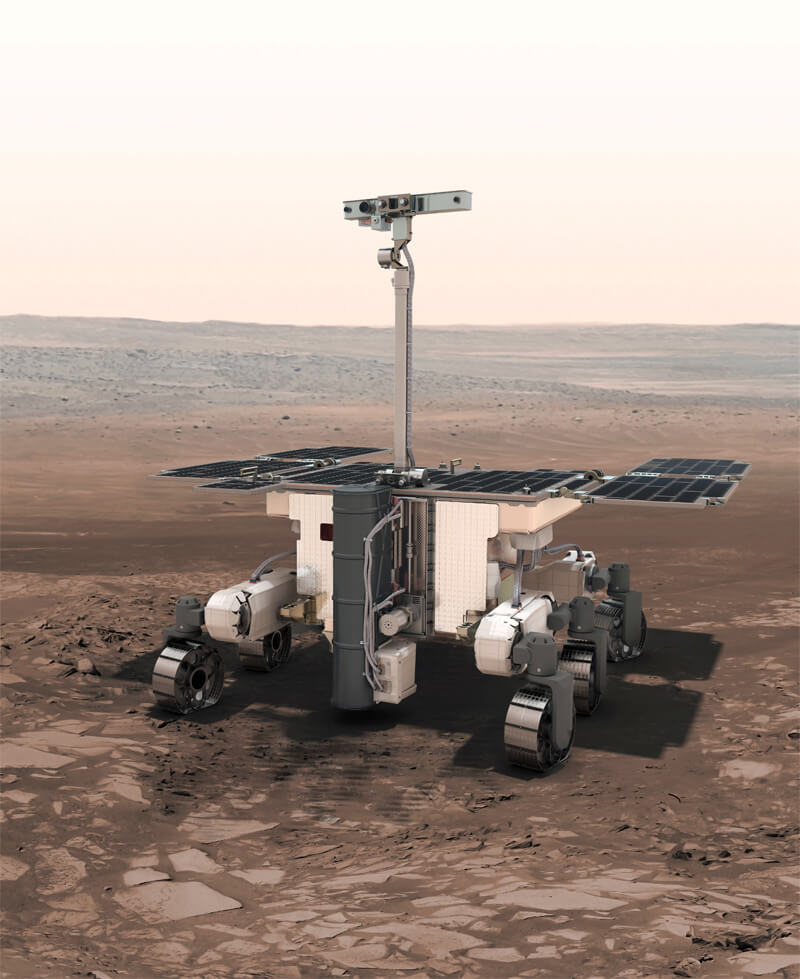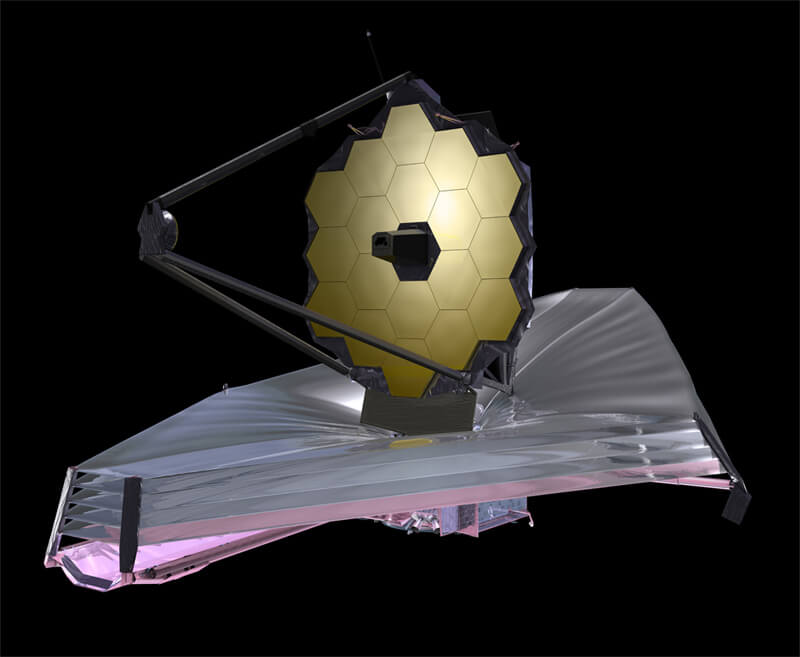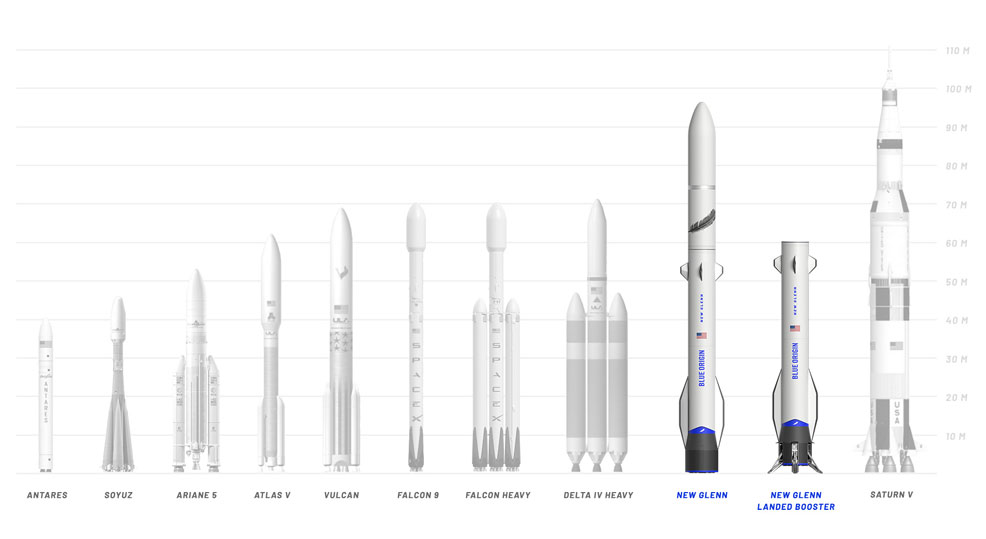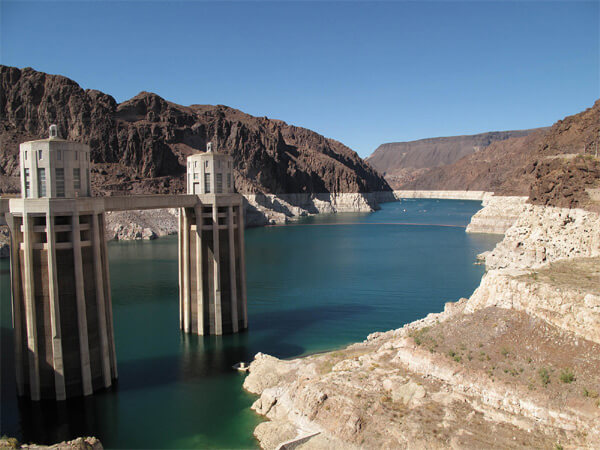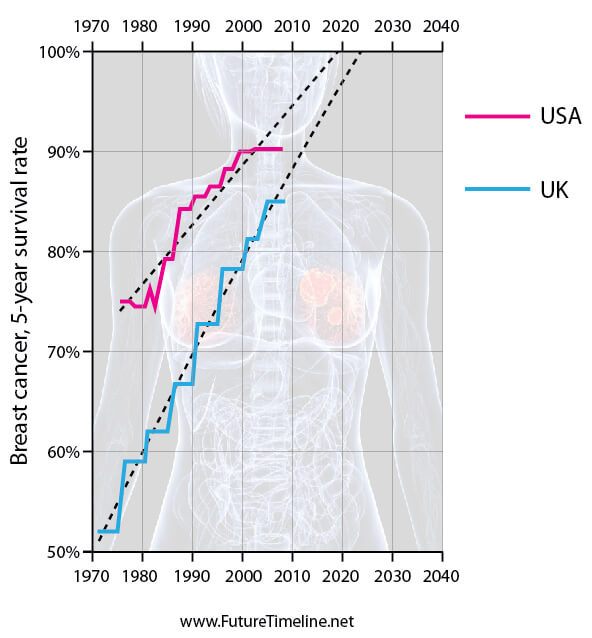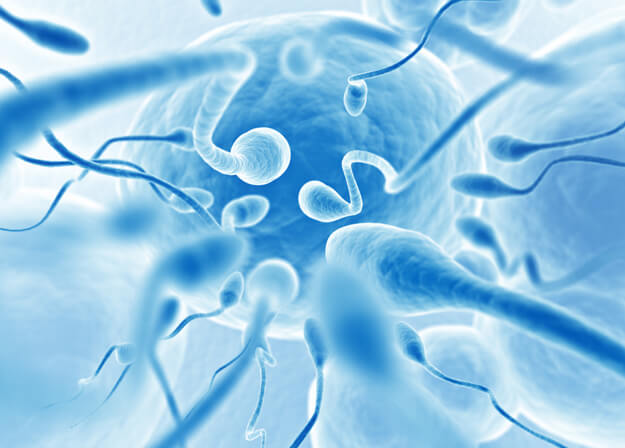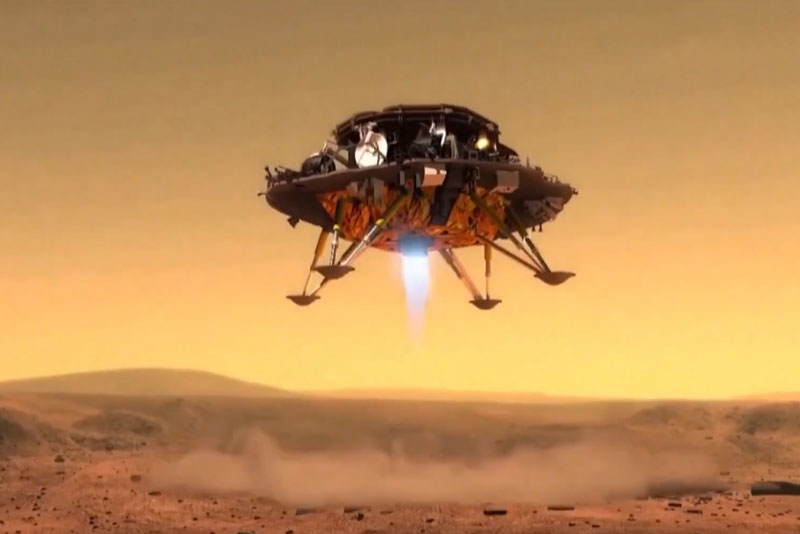2020
Microsoft ends support for Windows 7
The computer operating system, Windows 7, went on general release in October 2009 as the successor to Windows Vista. In contrast to Vista, Windows 7 received praise from critics, who considered it a major improvement over its predecessor due to increased performance, a more intuitive interface (especially the new taskbar), fewer User Account Control popups, and other improvements made across the platform. Windows 7 became a major success for Microsoft with over 100 million copies sold worldwide in just six months, increasing to 630 million licenses by July 2012. Windows 7 overtook Windows XP in terms of popularity in October 2011 and reached a peak market share of 63% in November 2014.
However, the late 2010s marked the beginning of a downturn in Windows 7 sales as users began upgrading to the newer and more powerful Windows 10. Microsoft ended mainstream support for Windows 7 in 2015, but continued to offer extended support. By December 2019, the market share of Windows 7 had declined to 27%. Customer service and security updates for home users end on 14th January 2020, which puts many PCs around the world at risk of malware. However, extended support for Professional and Enterprise volume-licensed editions remains available until 10th January 2023. Windows 10 continues to gain in popularity for some time, with support lasting until 9th January 2029.
Generation X is reshaping global politics
As the new decade begins, a fresh generation of leaders and decision-makers is emerging on the world stage. With the last of the Silent Generation passing away, and Baby Boomers waning in their influence, the so-called “Generation X” is coming into power.
Born between the late 1960s and early 1980s, Gen-Xers are more heterogeneous than previous groups: diverse in race, class, culture and ethnicity. They are more liberal and progressive than their parents,*with less respect for rules, authority and established policies. They are less likely to be religious. For most or all of their lives, they have grown up surrounded by computers – making them savvy and comfortable with technology, flexible and more open to new ideas. They have more concern for the environment, especially related to climate change, and are more accepting of science in general.
Angry at the social, political and economic legacy bequeathed to them, the Gen-Xers are beginning to use their newfound power to build a different kind of world. They are no longer willing to bow to the demands of the Baby Boomers, who many feel have robbed them of their future. They are also not willing to let the Millennials (Generation Y) get a free ride when it comes to paying their fair share.*
From 2020 onwards, there is a shift of money and resources away from senior citizens and towards those in their middle years. Property and inheritance laws, pensions, retirement plans and a number of elderly benefits undergo significant changes, as Gen-Xers work to stem the gap between themselves and their parents. Employees gain more rights, freedoms and flexibility in the workplace, with offices becoming more casual and informal, alongside a further expansion of homeworking and the gig economy.
Thanks to the Gen-Xers, more and more countries begin to relax their laws on private recreational drug use, gay marriage, prostitution, euthanasia and so on. Legalisation and taxation of cannabis add significantly to government revenues whilst helping to cut crime. Scientific research and environmental protection are given higher priorities. Some of these trends were emerging in any case, but are now being accelerated by the Gen-

The first stem cell therapy for congestive heart failure
In the early years of the 21st century, congestive heart failure (CHF) was the single biggest killer in the industrialised world, claiming more lives than all cancers combined. A chronic condition, it was characterised by an enlarged heart and insufficient blood flow to the organs and extremities of the body. About 5.1 million adults were affected in the U.S. during 2010 with 825,000 new cases annually and 50% of patients dying within five years of diagnosis. The only available options for end-stage or class IV heart failure were a heart transplant, or mechanical support using a left ventricular assist device (LVAD). Due to a shortfall of donors, transplants were often unable to meet demand, while permanent LVAD support was limited by clinical complications and high costs.
However, a number of new treatment options were emerging, as a revolution in healthcare began to take shape. Between 2013 and 2020, the global market for regenerative medicine grew from $16 billion to $67 billion, more than quadrupling in size.* Among the most notable discoveries were the use of stem cells to repair and replace damaged tissues. One such breakthrough involved the use of Mesenchymal Precursor Cells (MPCs) – rare cells found in blood vessels. Proof of concept was demonstrated in rodent models of heart disease, then larger animals, followed by Phase 3 human trials in 2014.*
Researchers found an optimal dose range of 150 million MPCs. A single injection – requiring no conventional surgery – was shown to release a cocktail of trophic factors inducing new blood vessel formation, heart muscle regeneration, anti-inflammatory properties and reduced scarring. Major improvements in heart function were observed, enabling patients to lead relatively normal lives once again. By 2020, it is commercially available – adding many years to the lifespans of people who would otherwise have died within a short time.*
Various other treatments are emerging this decade,* contributing to a substantial fall in cardiovascular disease. Deaths from these conditions have been largely eliminated in rich countries by the early 2040s.*
Progress with longevity extension
By 2020, laboratory experiments have yielded major improvements in the health and lifespan of mice.*Since rodents and humans share similar DNA, there is now hope of defeating the aging process. Though a permanent “cure” remains a distant prospect, a broad range of therapies are being developed to reduce the cell damage, mitochondrial mutations and other effects of growing
First orbital test flight of the SpaceX Starship
As early as 2005, aerospace company SpaceX had used the codename, “BFR”, for a conceptual heavy-lift vehicle, far larger than the Falcon family of vehicles and carrying a payload of 100 tons (220,000 lb). In 2018, after a number of design iterations, the concept was renamed “Starship”, and the first stage booster was named Super Heavy.
The Starship spacecraft and Super Heavy rocket (collectively referred to as Starship) would represent a fully reusable transportation system, intended to carry both crew and cargo to Earth orbit – but also potentially more distant locations, such as the Moon and Mars. The rocket, featuring 37 raptor engines, would hold sub-cooled liquid methane and liquid oxygen (CH4/LOX) propellants, with six landing legs for returning to the launch site. Together, the Starship and Super Heavy stood taller than any previous launch vehicle, their combined height of 118 m surpassing even the Saturn V (110 m) and dwarfing the Falcon Heavy (70 m) developed some years earlier by SpaceX.
For missions beyond Earth orbit, the Starship craft would be refilled with propellant in orbit, via a tanker vehicle. SpaceX founder and CEO, Elon Musk, stated that his long-term goal was to colonise Mars and deliver a million inhabitants to its surface within 50 years.
In late 2018, initial construction of two high-altitude prototype ships began, referred to as Mk1 and Mk2. Additionally, SpaceX conducted a static fire test of a smaller, height-reduced “Starhopper” prototype, which successfully ignited the engine while the vehicle remained tethered to the ground. A maiden flight test of the Starhopper in July 2019 attained a height of 18 m (59 ft). This was followed in August 2019 by a second untethered test flight that reached a vertical takeoff, vertical landing (VTVL) altitude of 150 m (490 ft).
However, a setback occurred in November 2019 when the full-size Mk1 blew its top off during a tank pressure test. SpaceX announced the retirement of the Mk1 and Mk2 prototypes after the incident and stated their intention to focus on Mk3 and Mk4 designs, which were closer to the flight specifications.
Musk planned to build and launch Starship systems from two locations: Cape Canaveral, Florida, and Boca Chica, Texas. During a presentation, he stated that both sites would enable many Starships to be built in the future, with potentially hundreds of launches per year, and that SpaceX was improving the design and manufacturing methods exponentially. Following the Starhopper and other test vehicles, a new tank dome was incorporated to avoid pressure failures in subsequent versions. Amid much fanfare, a first flight of the Starship into Earth orbit occurs during 2020.**
Mercury pollution has been greatly reduced
Mercury – also known as quicksilver – is a heavy and silvery element, and the only metal to exist in a liquid state at room temperature. It is used primarily for the manufacture of industrial chemicals, electronic applications, thermometers and in gaseous form to create fluorescent lamps.
If inhaled or absorbed through the skin and mucous membranes, mercury and most of its compounds are extremely toxic. They have a range of devastating health impacts, including brain and neurological damage (especially among the young), birth deformities, kidney damage and digestive system problems. Victims can suffer memory loss and language impairment alongside many other well-documented effects.
In the early 21st century, the largest emissions of mercury came from gold mining. Combustion of fossil fuels – mainly coal in utility, industrial and residential boilers – was the next biggest source. An estimated 1,960 tons were produced each year, with China by far the greatest contributor at nearly one-third of the global total. Improper disposal of certain products like batteries, automobile parts and fluorescent bulbs also led to mercury entering the environment. About 30% of the total amount of mercury entering Earth’s atmosphere each year came from anthropogenic (man-made) sources.
Mercury emissions from man-made sources in 2010. Source: UNEP
Though primarily an issue in developing countries, mercury was recognised as a global problem. In the space of just 100 years, man-made emissions doubled the concentration in the top 100 metres of the planet’s oceans.* Food chains were disrupted, with fish and shellfish absorbing small amounts of mercury,* posing a health issue the world over. This was a particular concern for pregnant women and those with young children.
In 2013, the United Nations Environment Program (UNEP) established a global, legally binding treaty to prevent emissions and releases of mercury.* Governments agreed on a wide range of mercury-containing products whose production, export and import would be banned by 2020. Detailed plans were enacted to cut levels of mercury used in mining operations, coal-fired power stations, industrial boilers, smelters, waste incineration and cement clinker facilities. Public awareness campaigns, medical programs and support for mercury-free alternatives were also developed. Though not yet completely eliminated, this has led to a major reduction in mercury pollution and its gradual phasing out by many countries.*
Glacier National Park and other regions are becoming ice-free
In 2020, the Glacier National Park in Montana is becoming ice-free, the park’s namesakes disappearing as a result of global warming. An earlier model (below) had forecast this event for 2030, based on a study by the US Geological Survey, along with 1992 temperature *
Many cold water dependent plants and animals subsequently die out, due to loss of habitat, including a number of rare species. Reduced seasonal melting of ice also affects stream flow during the dry summer and fall seasons, reducing water table levels and increasing the number of forest fires. This has the added effect of putting more carbon into the atmosphere. The loss of glaciers also reduces the aesthetic visual appeal of the region for visiting tourists.
This process is mirrored all over the world during the 21st century, with non-polar ice beginning to vanish from a number of scenic regions – including the Andes, Alps, Himalayas and Kilimanjaro.
Credit: U.S. Geological Survey
Britain’s new aircraft carriers reach full operational capability
The Queen Elizabeth class is a new type of aircraft carrier built for the Royal Navy. It replaces a trio of aging Invincible class ships that were in service from 1980 until 2014. Two aircraft carriers are developed in this new class: HMS Queen Elizabeth and HMS Prince of Wales. These vessels – described as “supercarriers” by the media – feature a displacement of 70,600 tonnes, over three times that of the older Invincible class; an overall length of 280 m (920 ft), a width at deck level of 70 metres (230 ft) and height of 56 metres (184 ft). They are the largest warships ever built in the United Kingdom.
Under the flight deck are a further nine decks. The hangar deck is large enough to accommodate up to 40 fixed and rotary wing aircraft. To transfer aircraft from the hangar to the flight deck, the ships have two large lifts, each of which are capable of lifting two F-35-sized aircraft from the hangar to the flight deck in under a minute. The ships’ self-defence weapons are the Phalanx CIWS (4,500 rounds/minute) for airborne threats, and miniguns plus 30mm cannons for sea threats.
Each ship has a crew of 686 (up to 1,600 when including the aircraft), integrated full electric propulsion with a range of 10,000 nautical miles (12,000 mi; 19,000 km) and speed of 25 knots (46 km/h; 29 mph). The main radar is a BAE Systems S1850M with fully automatic detection, for tracking up to 1,000 air targets at a range of around 400 km (250 mi). A second radar known as Artisan can track objects the size of a snooker ball from 20 km (12 mi) away.
Despite their impressive size and capabilities, the Queen Elizabeth class receives a great deal of criticism from the British media and public. The ships are delivered late and over budget. In 2013, it was reported that costs would need to almost double from the original £3.6 billion to £6.2 billion. Following sea trials in the late 2010s, both ships are operational in 2020.* They will remain in service for up to 50 years.*
Mars 2020 rover mission
In 2020, NASA deploys the latest in a series of Mars rovers. The design is based on the earlier Curiositymission that arrived in 2012 – but with some improvements such as better cameras (a total of 23), refined wheel dimensions and tread design, and a heavier sample capacity. A Mars Helicopter Scout (MHS) is also included. This solar-powered drone is tested for flight stability, and for its potential to scout the best driving route for the rover, using its on-board cameras. Two microphones are also fitted on the rover to record sounds of the descent from orbit, as well as subsequent surface activities.
The 2020 rover mission objectives are:
- to look for signs of past life
- collect samples for return to Earth
- demonstrate technology for human exploration
The mission accomplishes several high-priority planetary science goals. Over 30 samples of rock cores and soil are captured for later and more definitive analysis in laboratories back on Earth. The rover takes measurements and uses technology to help designers of a human expedition understand the hazards posed by Martian dust. It also demonstrates how to collect CO2 for on-site conversion into oxygen and rocket fuel, while also performing a new and improved form of precision landing: critical for eventual human exploration on the surface. Overall, this rover is a major step towards the agency’s long-term goal of sending humans to Mars in the 2030s.*
Credit: NASA/JPL-Caltech [CC BY-SA 4.0]
England’s Coastal Path is open to walkers
England’s Coastal Path is a 3,000-mile (4,800 km) public footway covering the entire perimeter of England and Wales – making it the longest managed and waymarked coastal path in the world. It opens up locations that were previously restricted to landowners or were physically inaccessible. Thousands of new walks, rural trails, climbing routes, beaches, coves, clifftops and scenic views become available, helping to boost tourism, improve local economies and breathe new life into seaside towns and villages. A route covering Wales had already been finished in 2012. The remaining English sections were expected to be finished by 2030, but additional government funding allowed this schedule to be brought forward 10 years, to 2020.* This new coastal path will be threatened by erosion in subsequent decades.* However, it is designed to “roll back”, so if part of the coast erodes or slips, the path is never lost – it can soon be moved back with the new coastline.*
The PlayStation 5 is launched
The PlayStation 5 (PS5) is a ninth-generation video game console developed by Sony. As the successor to the PS4, it is among the company’s flagship consumer electronics products.
The PS5 uses an 8-core, 16-thread CPU based on AMD’s Zen 2 microarchitecture, manufactured on the 7 nanometre (nm) process node. The graphics processor is a custom variant of AMD’s Navi family using the RDNA microarchitecture, which includes support for ray-tracing* – a relatively new rendering technique that creates extremely lifelike reflections, lighting, shadows and other effects. It comes with a solid state drive (SSD), enabling faster load times and larger bandwidth to handle massive resolutions of up to 8K Ultra HD.* An integrated Blu-ray drive supports 100GB Blu-ray discs and Ultra HD Blu-ray.
The system’s new controller features “adaptive triggers” that can change the resistance to a player as necessary, such as changing the resistance during the action of pulling an arrow back in a bow in-game. It also has strong haptic feedback through voice coil actuators, which alongside an improved controller speaker is intended to give better in-game feedback. USB-C connectivity, together with a higher rated battery are other improvements, while the console itself consumes less energy than the PS4. Backwards compatibility is provided for PS4 and PlayStation VR games. The PS5 is released in late 2020.*
Credit: Peter Kotoff
Chang’e 5 lunar exploration mission
Chang’e 5 is a Chinese lunar exploration mission consisting of a lander and a sample-return system, the first such effort since Russia’s Luna 24 in 1976. It follows the earlier Chang’e 4 probe, which performed the first soft landing on the far side of the Moon in January 2019.
The Chinese Lunar Exploration Program was designed to be conducted in three phases of incremental technological advancement: the first was simply reaching the Moon’s orbit, a task completed by Chang’e 1 in 2007 and Chang’e 2 in 2010. The second was landing and roving on the Moon, as Chang’e 3 did in 2013 and Chang’e 4 in 2019. The third phase is collecting lunar samples from the near side and sending them back to Earth, a task for Chang’e 5 and Chang’e 6.
The landing zone for Chang’e 5 is Mons Rümker in Oceanus Procellarum, located in the northwest region of the near side of the Moon. This region consists of a large, elevated volcanic mound 70 km (43 miles) in diameter that features a strong spectroscopic signature of basaltic lunar mare material.
The mission includes four modules or elements: a lander collects about 2 kg (4.4 lb) of samples from two metres (6.6 ft) below the surface and places them in an attached ascent vehicle that is launched into lunar orbit. The ascent vehicle makes an automatic rendezvous and docking with an orbiter, which transfers the material into a sample-return capsule for delivery back to Earth.
The lander is equipped with cameras, including a panoramic camera, a spectrometer to determine mineral composition, a soil gas analytical instrument, a soil composition analytical instrument, a sampling sectional thermo-detector, and a ground-penetrating radar. For acquiring samples, it uses a robotic arm, rotary-percussive drill, scoop for sampling, and separation tubes to isolate individual samples.
Chang’e 5 is launched in December 2020.* Its successor, Chang’e 6, follows in 2024 and returns samples from the lunar south pole. Chang’e 7 performs a detailed survey of the south polar region, while Chang’e 8 is designed to test technologies necessary for the construction of a lunar science base.
First flight of Ariane 6
Ariane 6 is a launch vehicle developed by ArianeGroup under the authority of the European Space Agency (ESA). It replaces the aging Ariane 5 – which had operated since the late 1990s – and is designed to be more modular, flexible, and cost-competitive.The rocket stands 63 m (207 ft) high, making it slightly taller than its predecessor and with a more slender appearance. It comes in two variants:
• Ariane 62, with two P120 boosters. This weighs around 530 tonnes (1,170,000 lb) at liftoff and is intended mainly for government and scientific missions, launching payloads of up to 5,000 kg (11,000 lb) into geostationary transfer orbit (GTO), and 10,350 kg (22,820 lb) into low Earth orbit (LEO).
• Ariane 64, with four P120 boosters. This is heavier, at 860 tonnes (1,900,000 lb) and intended for commercial dual-satellite launches of up to 11,500 kg (25,400 lb) into GTO, and 21,500 kg (47,400 lb) into LEO.
The lower cost of Ariane 6, around half that of Ariane 5, enables double the number of launches per year. A first flight occurs in late 2020, which carries 30 small broadband satellites.* This is followed by many more commercial launches in 2021 and beyond. Ariane 5 is phased out in 2023. Subsequent variants of Ariane 6 in the late 2020s include reusable components in order to become more competitive with the likes of SpaceX.
Great conjunction
In astronomy, a conjunction occurs when two sky objects have the same right ascension or the same ecliptic longitude, as seen from Earth. The two or more objects are not actually close to one another in space; the apparent phenomenon is merely caused by the observer’s perspective.
A so-called “great” conjunction involves Jupiter and Saturn, the Solar System’s two largest planets. Jupiter orbits the Sun at five astronomical units (AU), with its “year” lasting 12 Earth years. Saturn is nearly twice as far from the Sun as Jupiter, at 9.5 AU, and therefore a Saturn “year” is 29.5 Earth years.
This means that Jupiter “catches up” with Saturn every 20 years, producing a rare planetary alignment. A great conjunction took place on 31st May 2000; the next one occurs on 21st December 2020.
Credit: SkySafari
Internet use reaches 5 billion worldwide
At the start of the 21st century, the number of web users worldwide stood at roughly 300 million, or about 5% of the global population. Connections were slow and tended to have speeds of only 56 kbit/s. Mobile access to the Internet was largely non-existent, with only a handful of companies offering this service for portable devices.
However, thanks to a combination of plummeting costs and exponential technology improvements, Internet access grew rapidly in subsequent years and had reached over a billion people by December 2005. This trend continued into the 2010s. In September 2014, a significant landmark was reached as the global average connection speed reportedly hit 4.6 Mbit/s – exceeding the minimum 4 Mbit/s threshold to meet the “broadband” criteria.*
By the late 2010s, more than half of the world’s population were Internet users, with four billion people having access. Most of the recent growth had come from China, India and other emerging economies.
Web-connected mobile devices were now ubiquitous, while data transfer speeds continued to increase. From 2019 onwards the next cellular wireless standard, known as 5G, offered gigabit speeds and many other features.
More than five billion people – a nearly 20-fold increase compared to January 2000 – are Internet users by the end of 2020.
2021
Exascale computers are deployed
An exaFLOP is 1,000,000,000,000,000,000 (a million trillion, or one quintillion) floating point operations per second. The world’s top supercomputers are now reaching this speed, which is a 1,000-fold improvement over a petaFLOP machine.
The growth of computing power had followed an exponential trend for many years. However, a slowdown in the rate of progress was observed during the second half of the 2010s. It had earlier been predicted that exaFLOP machines would arrive by the end of the decade, but this schedule appeared to slip as technical and funding issues were encountered.
IBM unveiled “Summit” – featuring a peak performance of 200 petaFLOPS – which became the world’s fastest supercomputer in June 2018, a title it would retain into 2019 and 2020. Several challengers were waiting in the wings, including three exaFLOP machines being developed by China, three by the USA and others by the European Union, India, Japan and Taiwan. These would be deployed during the early and mid-2020s.
China was the first country to achieve a “peak” exaFLOP machine, but there were ongoing delays in reaching a sustained exaFLOP performance. By 2021, this is finally demonstrated, using processors designed and manufactured domestically. Among the new machines is Tianhe-3, successor to the Tianhe-2.* After China, the next countries to demonstrate a sustained exaFLOP performance are the United States and Japan.*
Exascale computing leads to revolutionary advances in a number of fields – allowing simulations of greater scale, complexity and duration than ever before. Neuroscience is one area of particular note, as it becomes possible to simulate the entire human brain in real-time, down to the level of individual neurons. Subsequent upgrades to existing machines, along with entirely new machines, enable further orders of magnitude gains in performance and pave the way to zettaFLOP supercomputers in the 2030s.
The ExoMars rover touches down on Mars
ExoMars is a joint mission between the European Space Agency (ESA) and the Russian Federal Space Agency (Roscosmos). Divided into two parts, the first phase of the mission was launched in 2016, arriving nine months later. This consisted of an orbiter – ExoMars Trace Gas Orbiter – for mapping sources of methane and other gases on Mars, to determine the best location for a rover to study. It also contained a static demonstration module to prove the landing site was viable.
The second phase is launched in 2020, arriving in 2021 with the ExoMars rover built by ESA. This lands on Mars using a “sky crane” system, in which four rockets slow the descent once the main parachute has been deployed. The landing site is near the equator to maximise available solar power.
The rover’s primary objective is to determine any signs of microbial life on Mars, past or present. It is equipped with a drill that bores down two metres below the surface to retrieve samples. These are transferred to a miniature laboratory inside the rover. This contains a sensor for biological molecules, infrared and X-ray spectroscopes that catalogue the mineralogical makeup of the sample, together with imaging devices.
Located in the drill structure is another infrared spectrometer that studies the inside surface of the bore hole. ExoMars uses ground-penetrating radar to search for ideal locations at which to drill. The mission is almost entirely automated, as the rover uses imaging cameras to create a 3D map of the terrain in order to avoid obstacles. It has a lifespan of six months, travelling approximately 100 metres each day and testing dozens of different samples.
The spacecraft was scheduled to launch in 2018 and land on Mars in early 2019, but due to delays in European and Russian industrial activities and deliveries of the scientific payload, it was moved to the launch window in July 2020. With a journey time of nine months, it arrives in March 2021.*
Credit: ESA
The James Webb Space Telescope is launched
The James Webb Space Telescope (JWST) is the long-awaited successor to the aging Hubble Space Telescope. Named after James E. Webb – the NASA administrator from 1961 to 1968 – it is developed as a collaboration between NASA, the European Space Agency, and the Canadian Space Agency.
The JWST is located near Earth–Sun Lagrangian point L2 with an orbital distance that varies from 374,000 km (232,000 mi) to as far away as 1,500,000 km (930,000 mi). It is designed to offer unprecedented resolution and sensitivity from long-wavelength visible light through the mid-infrared range. While the Hubble Space Telescope had a 4.5 m2 (48 sq ft) primary mirror, the JWST’s collecting area is nearly six times larger at 25 m2 (270 sq ft). This is composed of 18 hexagonal mirror segments working in unison. In terms of magnification, it is 100 times more powerful than Hubble, making it capable of seeing the very first generation of stars that ignited less than 200 million years after the Big Bang – a time when the universe was only 1.4% of its current age. If a bumblebee was placed on the Moon’s surface, the JWST would be able to spot the insect both in reflected light, and from its body heat.* A large sunshield keeps the telescope’s instruments below 50 K (−220 °C; −370 °F).
The JWST has four main scientific goals:
• To search for light from the first stars and galaxies that formed in the Universe after the Big Bang
• To study the formation and evolution of galaxies
• To understand the formation of stars and planetary systems
• To study planetary systems and the origins of life
The JWST was first proposed in 1996, at which time its cost was estimated at $0.5 billion, with a launch date of 2007. Over the years, however, the costs began to spiral upwards and the schedule faced major delays. By 2018, the project had mushroomed to $9.7 billion, with a launch date of March 2021.*
Credit: NASA
First uncrewed maiden flight of NASA’s Space Launch System (SLS)
The Space Launch System (SLS) is an expendable launch vehicle in the “super heavy-lift” class, developed from 2011 onwards and intended to supersede the retired Space Shuttle as NASA’s flagship vehicle.
Initially designed to carry 70 metric tons (150,000 lb) into low Earth orbit (LEO), the SLS later exceeded that requirement by a significant margin, with a rated payload capacity of 95 metric tons (209,000 lb). Future versions, known as Block 2, would have upgrades including advanced boosters, with an even greater LEO capability of more than 130 metric tons (290,000 lb). For comparison, the earlier Space Shuttle program of 1981 to 2011 had a maximum payload capacity of only 27.5 tons (60,600 lb), or about 21% of the SLS Block 2.
The SLS was to become the primary launch vehicle of NASA’s deep space exploration plans – including crewed lunar flights of the Artemis program and a subsequent follow-on human mission to Mars. It would also be used for constructing a new space station in orbit around the Moon.
A first uncrewed maiden flight occurs in 2021,* which is followed by a crewed lunar flyby in 2022. Additional launches include a Block 1 Cargo flight that delivers the Europa Clipper probe to Jupiter via a direct Hohmann transfer orbit. The human missions to lunar orbit and beyond make use of a partially reusable module atop the SLS, known as the Orion Multi-Purpose Crew Vehicle (Orion MPCV), which can support a crew of six on long-duration missions.
While the SLS is extremely powerful (featuring the highest ever total thrust at launch), the project is criticised for its cost, in comparison to new and emerging commercial rockets, which can also provide greater reusability – such as those developed by SpaceX and Blue Origin. This forces a rethink of NASA’s funding as the private sector takes on an increasingly large role in spaceflight, contributing to an industry worth $1 trillion by the late 2030s.
First flight of the New Glenn reusable rocket
New Glenn (named after the late U.S. astronaut, John Glenn) is a heavy-lift orbital launch vehicle developed by Blue Origin, the aerospace company founded by Amazon boss Jeff Bezos. The booster stage is designed to be reusable, cutting launch costs and making it a competitor to SpaceX.
Previously, Blue Origin had developed the New Shepard – a vertical-takeoff, vertical-landing (VTVL), crew-capable rocket. Prototype testing in 2006, followed by full-scale engine development in the early 2010s, led to a first flight in 2015. Reaching an altitude of 93 km (58 miles), this uncrewed demonstration was deemed partially successful, as the onboard capsule was recovered via parachute landing, while the booster stage crashed, and was not recovered. By 2019, a further 11 test flights had taken place, all successfully landing and recovering the booster stage.
The New Shepard, with a height of 18 m (59 ft) and only a tiny payload,* fell into the sub-orbital class of rockets. By contrast, its successor would be more than five times as tall on the launch platform. New Glenn, standing 95 m (313 ft), dwarfed the earlier New Shepard and was designed to carry 45,000 kg (99,000 lb) to low-Earth orbit (LEO) and 13,000 kg (29,000 lb) to geosynchronous transfer orbit (GTO).
Blue Origin began working on the New Glenn in 2012, and publicly revealed its design and specifications in 2016. The vehicle, described as a two-stage rocket with a diameter of 7 m (23 ft), would be powered by seven BE-4 engines (equivalent to 21 Boeing 747s). Bezos now reportedly sold $1 billion worth of Amazon.com stock annually – a figure that doubled by the end of the decade – in order to fund Blue Origin.
By 2019, Blue Origin had gained five customers for New Glenn flights, including a multi-launch contract with Telesat for its broadband constellation. All of these launches would feature a reusable first stage, meaning the booster would return to Earth and land vertically,* just like the New Shepard sub-orbital launch vehicle that preceded it.
A first launch of the New Glenn occurs in 2021, from a reconstructed and improved Launch Complex 36 (LC-36) in Florida.* Following stage separation, the first stage flies back to Earth and lands nearly 1,000 km downrange on a moving ship. The second stage engines ignite and the 7-metre fairing separates. The mission is complete when the payload is delivered safely to orbit.
Alongside the New Glenn, Jeff Bezos had even greater ambitions. In 2019, he unveiled Blue Origin’s longer-term vision for space, which included a lunar lander known as Blue Moon. This could deliver up to 4,500 kg (9,900 lb) to the Moon’s surface and potentially astronauts too, using a New Glenn as the launch vehicle – in combination with ascent and transfer stages developed by other companies.
Crossrail opens in London
Crossrail is a major new rail line built for London and southeast England. In development since 1974, it is one of Europe’s largest ever transport projects – designed to boost London’s subway capacity by over 10% and bringing widespread regenerative benefits.
The line has a total length of 118 km (73 miles), which includes 42 km (26 miles) of tunnels. It runs from the county of Berkshire in the west, through to Essex in the east, linking together all the main economic hubs in the UK capital: Heathrow Airport, the West End, the City of London and Canary Wharf. Nine-coach trains – each 200 metres (660 ft) long and carrying up to 1,500 people – run at frequencies of 24 per hour at peak periods. These brand new, longer trains feature walk-through air-conditioned carriages, live travel information and free Wi-Fi.
The original planned schedule was for the first trains to run during 2017. A Comprehensive Spending Review in 2010 – saving over £1bn of the estimated £16bn projected costs – meant that the first trains to run on the central section would be delayed until December 2018. This timeline was further delayed until the Autumn of 2019 and then again until 2021.* Crossrail is also named as the Elizabeth Line in honour of Queen Elizabeth II. In addition to the rail line itself, the project includes ten new state-of-the-art stations.
Water crisis in southwest USA
Southwestern parts of the USA – including Nevada, Arizona and southern California – are now faced with crippling water shortages. Lake Mead, a key source of water for over 25 million people (about 8% of the US population), is running dry as a result of climate change. Increased population growth and associated demand for water resources have also played a part. Once the largest reservoir in the country, its capacity has declined substantially, due to the Colorado River’s net deficit of nearly 1 million acre-feet of water per year. As well as providing fresh water, Lake Mead has been a major source of hydroelectric power, via the Hoover Dam. Blackouts are now increasingly common. Authorities have been attempting to stabilise the situation by constructing solar power facilities, as well as laying groundwater pipelines from elsewhere in Nevada.
Lake Mead as seen from the Hoover Dam, clearly showing the “bathtub ring”. Credit: Cmpxchg8b
Tokyo hosts the Olympic Games
The Olympic Games are held in the summer of 2021 in Tokyo, Japan. The other candidate cities had been Madrid and Istanbul. Prior to Tokyo’s selection by the Japanese Olympic Committee, Hiroshima expressed an interest in hosting, but later withdrew their plans to bid. Tokyo had hosted the games 50 years previously and its National Olympic Stadium is once again used for the main venue.
In August 2013, the Governor of Tokyo, Naoki Inose, stated that the 2011 nuclear accident at Fukushima would not pose a threat to Tokyo’s ability to host the Games. He stated that “the water in Tokyo is safe, and we have released this data on our website” and that “radiation levels are no different than in London or Paris.” A letter of assurance over the issue was later sent to the IOC members.
The Olympics were originally scheduled to take place from 24th July to 9th August 2020, with preliminary events starting on 22nd July. On 24th March 2020, however, the IOC and the Tokyo Organising Committee officially announced that due to the worldwide COVID-19 pandemic, the 2020 Summer Olympics and Paralympics would be delayed to 2021 (marking the first time that an entire Olympics had ever been postponed). The Games are still publicly branded and marketed as “Tokyo 2020”, even with the change in scheduling.
Tokyo becomes the first Asian city to host the Olympic Games twice. The previous occasion was in 1964. Its slogan for the 2021 event is “Discover Tomorrow” and robots are featured during the games in reflection of this.
The world’s largest insect swarm re-emerges
Brood X is the largest of 15 groups of 17-year cicadas. Its members, all of the genus Magicicada, tunnel to the surface en masse, mate and lay eggs, then die. This is the biggest swarm of insects in the world. The area covered stretches from New York, down the East Coast to Georgia and west to Illinois.
The last time Brood X emerged was in 2004.* Countless billions of the insects infest the Eastern USA, with any existing tranquillity ruined by their incessant buzzing during the mating ritual, which is audible from a mile away. Despite the nuisance it causes, the emergence of this swarm is relatively short-lived. It also delivers vital nutrients to the topsoil, leaving the native environment noticeably better in the weeks after the ensuing die-off.
Five-year survival rates for breast cancer are approaching 100%
Worldwide, breast cancer accounts for nearly 23% of all cancers in women (excluding non-melanoma skin cancers). In 2008, it caused 458,000 deaths, 13.7% of cancer deaths in women. It is over 100 times more common in women than in men, although men tend to have poorer outcomes due to delays in diagnosis.
In 2011, advances in genetics led researchers to identify 10 subtypes of breast cancer, each with its own unique genetic fingerprint.* In that same year, three genes linked to the most common form of breast cancer were found, including one responsible for driving the growth of tumours.*
Combined with personalized genomics, this paved the way for a new generation of drugs and other treatments that were precisely customisable for a particular individual. In many Western countries, five-year survival rates are now approaching 100%, with 10-year survival likely to meet this level in the mid-2030s.
Male birth control pills are entering the market
Early in this decade, the first male birth control pills are available for mass consumption. Methods of chemical male birth control had been around for a few decades. Early efforts focused on using testosterone and synthetic hormones to limit sperm production, in a similar way to female birth control’s effect on egg production. However, these proved to have too many negative side effects and were subsequently abandoned.
- Other, non-hormonal methods were tried. Among the most successful was a compound known as JQ1, developed by US researchers in 2012.This worked by targeting a testis-specific protein called BRDT that is essential for fertility. When mice were given the BRDT-inhibiting molecule, they began producing fewer sperm and those they did produce were unable to swim properly. Mating studies confirmed that JQ1 indeed worked as an effective male contraception. Even better, the effects were completely reversible, without adverse consequences for the animals’ testosterone levels or behaviour. The molecule also left no apparent side effects on the males’ future offspring.
The success of this new compound and the strong similarity between mouse and human BRDT proteins allowed JQ1 to proceed to clinical trials, beginning in 2013.* Following an eight year period, it is available in pill form by 2021. This becomes the first new reversible contraceptive for men since the development of the condom, centuries ago.
The world’s first artificial kidney
Kidneys perform a vital role in the human body: filtering blood, removing excess fluid and eliminating waste products. They are essential to the urinary system, the regulation of blood pressure (via salt and water balance) and the production of various hormones.
Kidney diseases are diverse, but their primary causes over the long-term are diabetes and high blood pressure. Among the most serious clinical conditions is end-stage renal disease (ESRD), affecting 2 million people worldwide. This can lead to complete failure of the kidneys to work at a level needed for day-to-day life. In the later stages of the illness, the only treatment options are dialysis or transplant. Although dialysis can be life-saving, it lasts for only a short time and then the procedure must be repeated. Organ transplants can help patients to regain their strength and mobility, allowing a return to more normal activities; but there is often a shortage of donors, plus the risk of rejection by their immune system. Stem cell treatments are beginning to emerge, but have yet to include a complete replacement for kidneys.
A third option has been explored, however, which is now becoming available for the first time: fully artificial kidneys. This idea was researched at the University of California, San Francisco (UCSF), leading to a prototype model in 2010 and clinical trials beginning in 2017. As part of a government innovation programme, the development process for this particular project was accelerated, cutting the time required for approval.
Using nanotechnology, the device can mimic almost all the vital functions of the kidney, while a bioreactor performs other renal activities. This is done without the need for pumps or electrical power – filtration is pushed along by the body’s own blood pressure. Furthermore, the device has an indefinite lifespan, unlike real transplanted kidneys which typically last for 10 to 12 years.
Launch of the Terrafugia TF-X flying car
The Terrafugia TF-X is a plug-in hybrid tilt-rotor vehicle and the first fully autonomous flying car. It can avoid other air traffic, bad weather and restricted air space and navigate its way to pre-specified landing zones. Manual controls and overrides also exist in case of emergencies or unexpected situations. The TF-X has a range of 500 miles per flight and batteries are rechargeable by the engine. Launched in 2021, it has a starting price of about $280,000 putting it beyond the reach of most consumers.* However, cheaper flying and hovering vehicles become more widely available later this century and into the 22nd century.*
China’s first mission to Mars
During the first two decades of the 21st century, China’s National Space Administration had focused heavily on the Moon. Its Chang’e series of lunar probes achieved great success.
China began a Mars program in 2009 in partnership with Russia. However, the Russian spacecraft Fobos-Grunt, carrying a Chinese orbiter called Yinghuo-1, crashed in January 2012, days after lift-off. China subsequently began its own independent Mars project, with a mission approved by authorities in 2016.
The new Chinese Mars probe would consist of an orbiter, lander and a rover deployed on the surface of Mars, with scientific objectives being to search for evidence of both current and past life, and to assess the planet’s environment. It was named Mars Global Remote Sensing Orbiter and Small Rover mission, designated by a shorter name of Huoxing-1, abbreviated to HX-1 (Huoxing simply means “Mars” in Chinese).
The spacecraft is launched aboard a Long March 5 heavy lift rocket in July 2020, with a total payload mass of 5,000 kg (11,000 lb). Orbital insertion at Mars is scheduled for February 2021, with a surface landing date of 23rd April 2021.* The lander carrying the rover is designed to use a parachute, retrorockets, and an airbag to achieve a soft landing, which is planned to occur in Utopia Planitia – a region known to contain a large amount of underground water ice.
The rover is powered by solar panels, and is fitted with Ground-Penetrating Radar (GPR), to scan as deep as 100 m (330 ft) below the surface. It can also perform chemical analyses on Martian soil, and look for biomolecules and biosignatures. The six-wheeled, 200 kg vehicle is designed to last three months.*
The orbiter and rover together carry a total of 12 instruments. In addition to its powerful ground radar, the rover includes a Multi-Spectrum Camera (MSC) and a Navigation and Topography Camera (NTC). The orbiter, meanwhile, is equipped with a High Resolution Camera (HRC) to obtain images with a resolution down to just 2 m from a 400 km orbit. The surface rover includes a demonstration of technology needed for a Mars sample return mission proposed for the 2030s.
The first Arabian mission to Mars
This year sees the first mission to Mars by an Arabian country – in this case, the United Arab Emirates (UAE), which sends an unmanned probe. The Arab League nations have established a pan-Arab space agency by now, headed by the UAE. This functions in a similar way to the European Space Agency.
The UAE had already invested more than 20 billion dirham (US$5.4 billion) in the space sector by 2014. This further expansion was aimed at diversifying its economy away from reliance on hydrocarbons and fostering new talent in technology and aerospace fields. It was also motivated by concerns over national security and the growing importance of satellite data, mobile communications, Earth mapping and observation. Thanks to its hi-tech facilities, Dubai is now a regional hub for satellite design and construction.* The Mars mission coincides with the 50th anniversary of the UAE’s formation. It is helped by the fact that space projects are becoming increasingly cheap, easy and reliable, through a new generation of rockets and fuels.
In 2014, ruler of the UAE’s emirate of Dubai, Sheik Mohammed bin Rashid Al Maktoum, said the mission would prove the Arab world was still capable of delivering scientific contributions to humanity, despite the many conflicts across the Middle East: “Our region is a region of civilization. Our destiny is – once again – to explore, to create, to build and to civilize.”*
India’s first manned space flight
India becomes only the fourth nation – after Russia, the US and China – to independently launch humans into space. The rocket used is a variant of the Geosynchronous Satellite Launch Vehicle, operated by the Indian Space Research Organisation (ISRO). This carries a largely autonomous 3.7-ton capsule with a three-person crew on board. They remain in orbit around the Earth at 248 miles (400 km) altitude for seven days, before splashing down in the Bay of Bengal. The total cost of the project is about 124 billion rupees ($2.67 billion). Originally planned for 2016, the mission faced delays, but is eventually launched in 2021.Subsequent versions of the craft enable longer missions, including rendezvous and docking capabilities with space stations and other orbital platforms.
Future years to be posted on new page give your eyes time to rest, however it’s hard to stop gathering information for our futures. We all need a break every now and then,
Love and Regards, We Have Never Been Alone and We are the Disclosure !
Happy Quarantine !
Thank You,
Nancy Thames 👽🛸


